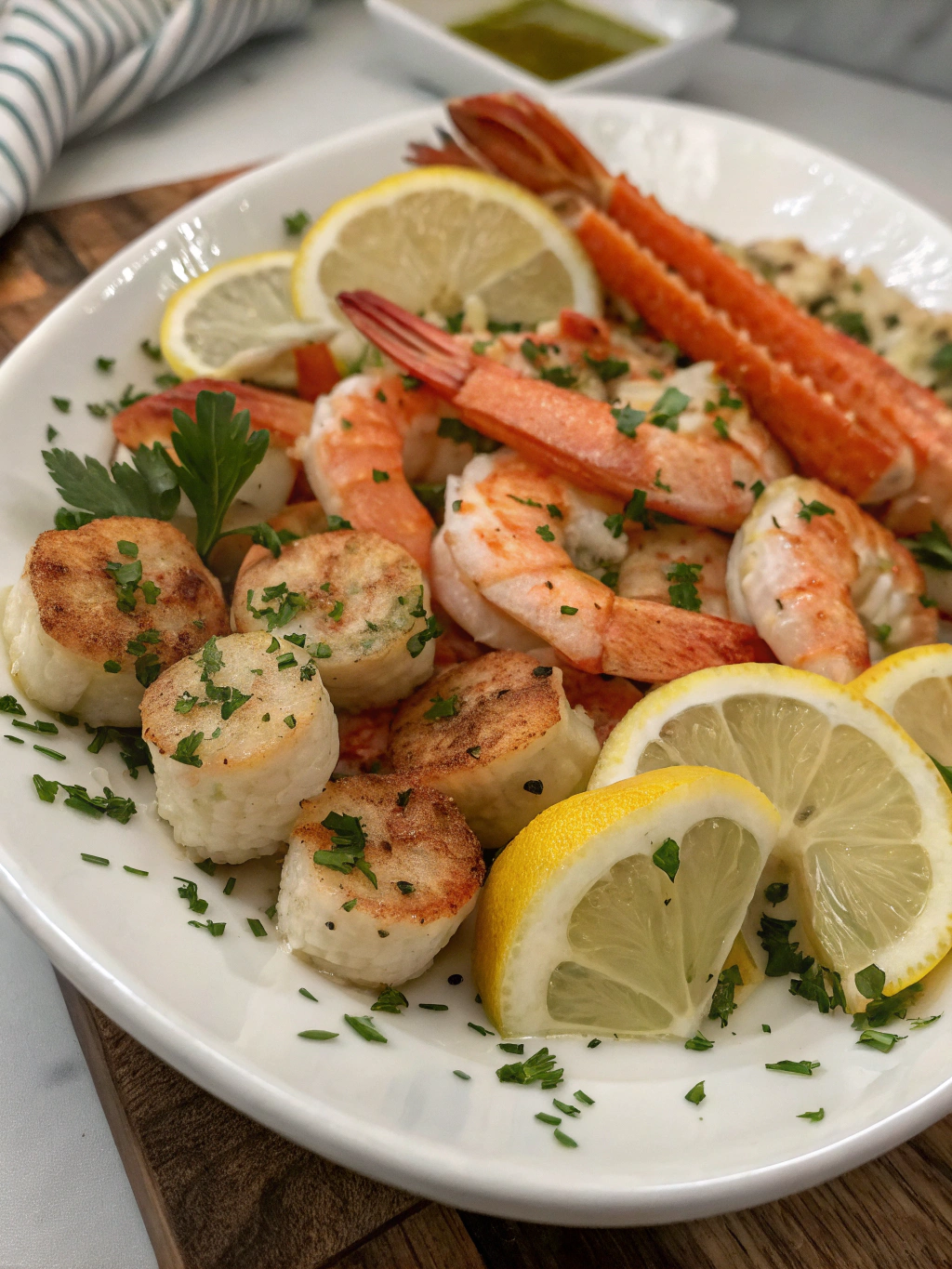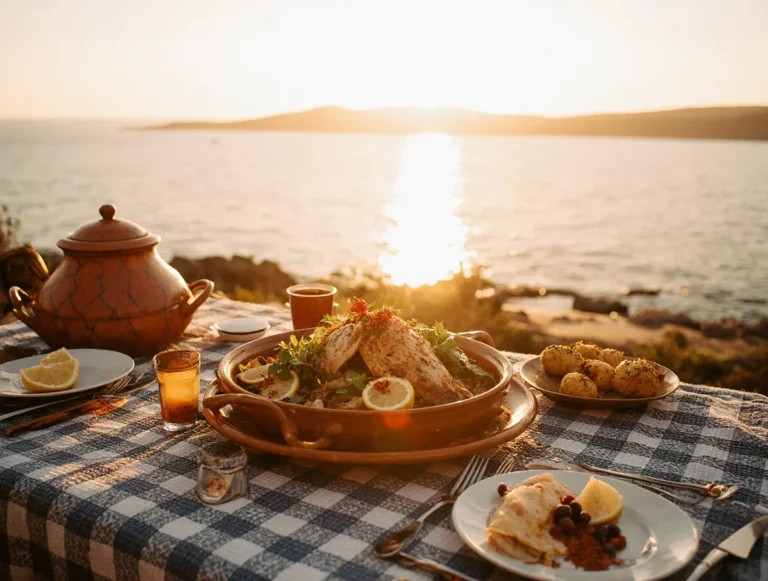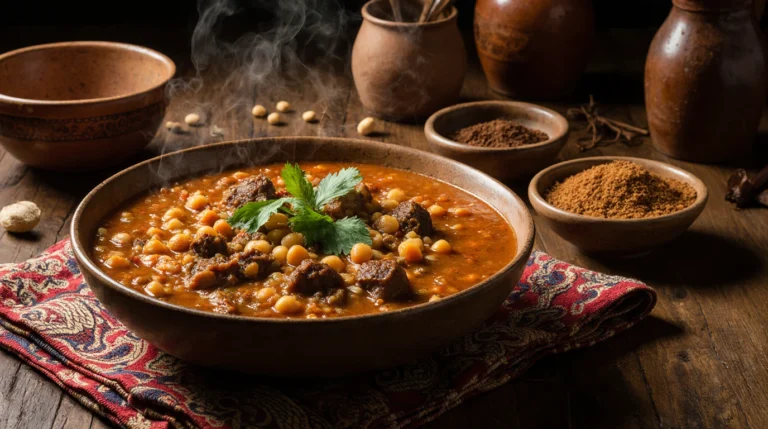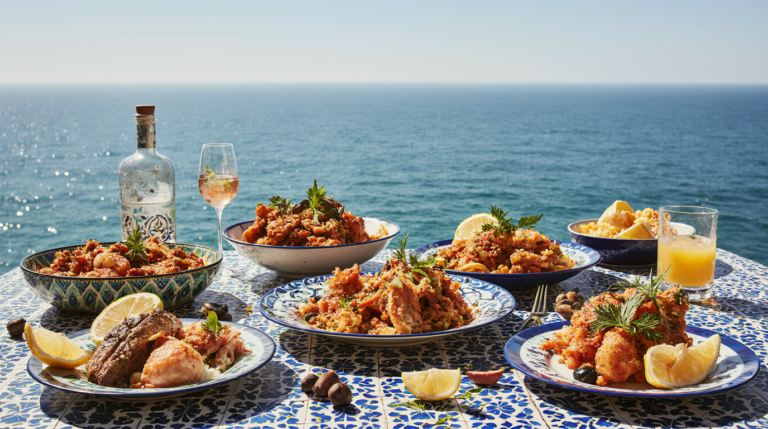Seafood Recipes You’ll Love from Morocco
Craving a taste of the exotic? Imagine savoring a dish that transports you to the bustling markets of Marrakech, where the aromas of spices and the catch of the day mingle in a tantalizing fusion. Seafood is a staple in Moroccan cuisine, and these recipes will tantalize your taste buds with their vibrant flavors and unique combinations.
Ingredients List
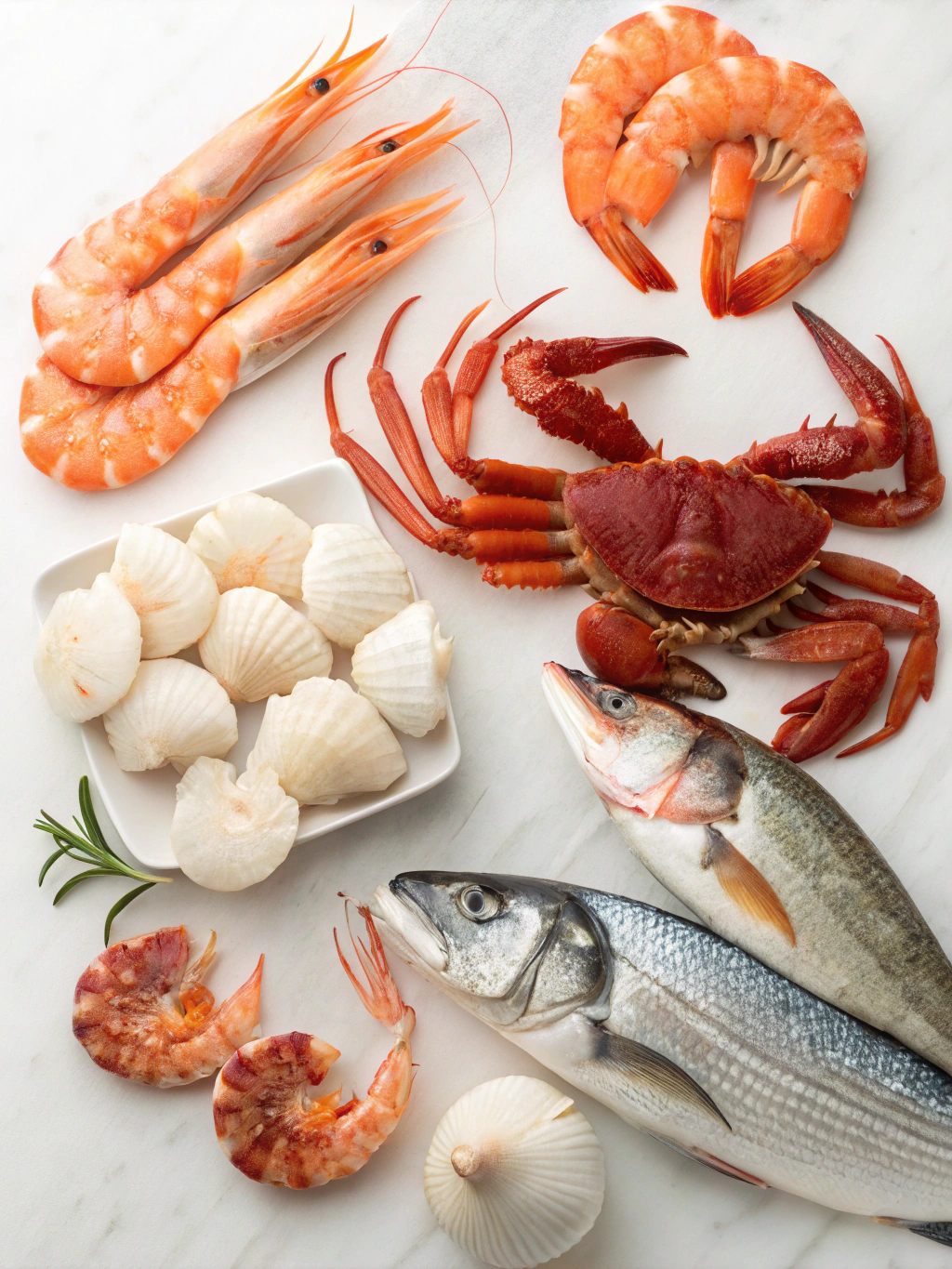
Before we dive into the recipes, let’s gather the essential ingredients. While the specific items may vary, you’ll typically need:
- Fresh sea-food (such as shrimp, calamari, or fish fillets)
- Aromatic spices (cumin, coriander, paprika, saffron, ginger, and cinnamon)
- Herbs (cilantro, parsley, and mint)
- Vegetables (onions, garlic, tomatoes, and bell peppers)
- Olives and preserved lemons (for a tangy kick)
- Olive oil and butter (for cooking and flavor)
Don’t be afraid to experiment with substitutions based on your preferences or dietary needs. For instance, you could swap in chickpeas or lentils for a vegetarian option or use coconut oil instead of butter for a dairy-free alternative.
Timing
Most Moroccan seafood dishes can be prepared in under an hour, making them perfect for weeknight dinners or special occasions. The average preparation time is around 20 minutes, while cooking typically takes 30-40 minutes, depending on the specific recipe and cooking method.
For example, a shrimp tagine (a traditional Moroccan stew) can be ready in as little as 45 minutes, which is 25% faster than the average time for a complex seafood dish.
Step-by-Step Instructions
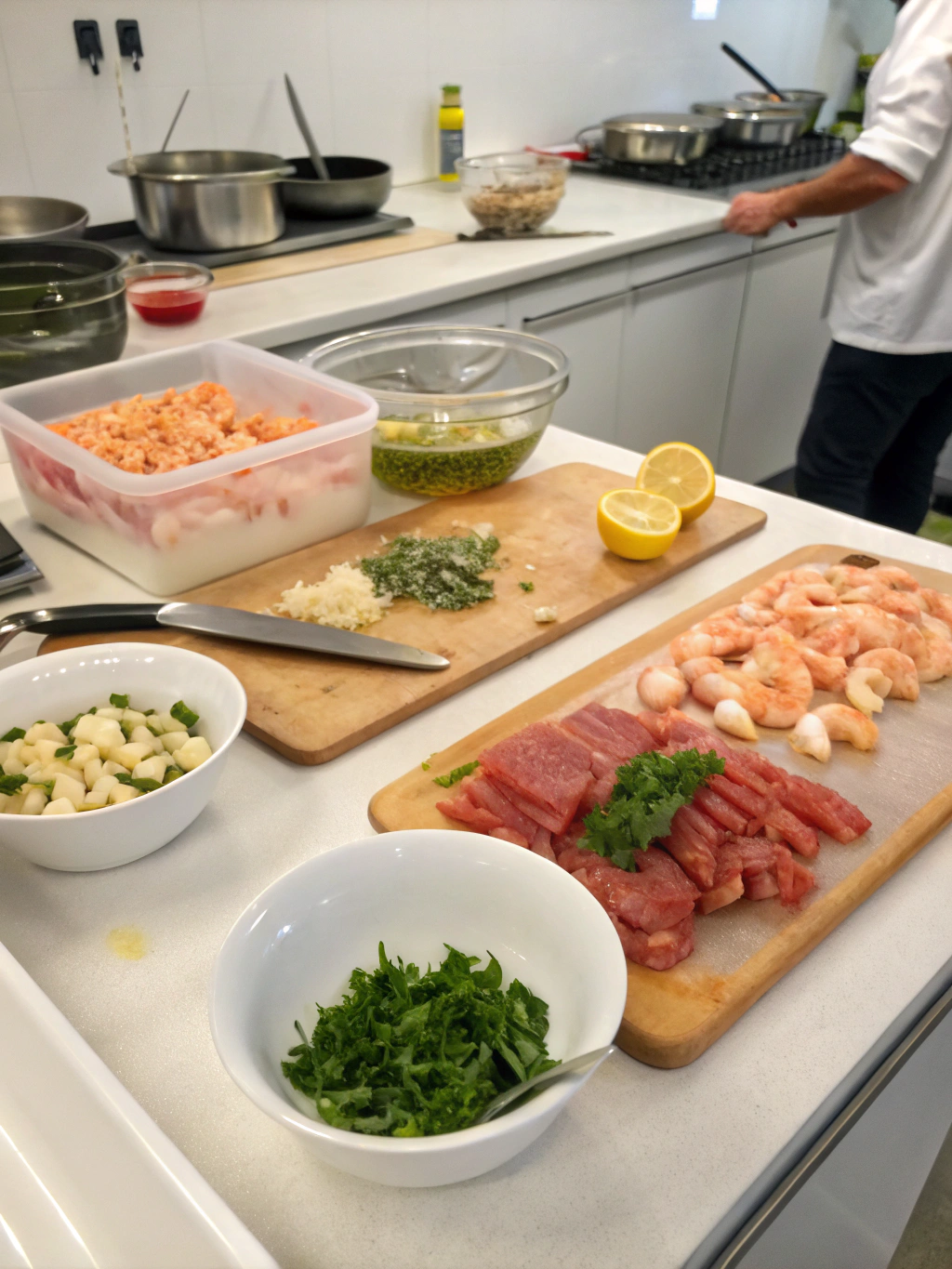
Step 1: Prepare the Marinade
In a small bowl, combine the spices (cumin, coriander, paprika, and a pinch of saffron), minced garlic, lemon juice, and olive oil. Whisk the ingredients together until well-blended. This aromatic marinade will infuse your seafood with authentic Moroccan flavors.
Step 2: Marinate the Seafood
Add your fresh seafood (shrimp, calamari, or fish fillets) to the marinade and gently toss to coat evenly. Cover and refrigerate for at least 30 minutes, or up to 2 hours for maximum flavor absorption.
Step 3: Sauté the Aromatics
In a large skillet or tagine, heat olive oil or butter over medium heat. Add sliced onions and sauté until translucent. Then, add minced garlic and ginger, and cook for another minute until fragrant.
- Tip: For an extra flavor boost, consider adding a pinch of saffron threads or a teaspoon of ras el hanout (a Moroccan spice blend) to the aromatics.
Step 4: Cook the Seafood
Remove the marinated seafood from the refrigerator and add it to the skillet or tagine. Cook for 5-7 minutes, or until the seafood is opaque and cooked through, stirring occasionally.
Step 5: Finish with Flavorful Additions
Once the seafood is cooked, stir in diced tomatoes, sliced bell peppers, and a handful of green olives or preserved lemons. Simmer for an additional 5 minutes to allow the flavors to meld.
Step 6: Garnish and Serve
Remove the dish from heat and garnish with fresh cilantro or parsley. Serve hot, accompanied by couscous or crusty bread to soak up the delicious sauce.
Nutritional Information
Moroccan seafood dishes are not only bursting with flavor but also packed with essential nutrients. A typical serving (approximately 6 ounces of seafood) can provide:
- Protein: 25-30 grams
- Healthy fats (from olive oil): 10-15 grams
- Vitamins and minerals: Vitamin B12, selenium, zinc, and iron
Additionally, the inclusion of vegetables and herbs adds fiber, antioxidants, and various vitamins and minerals to the dish, making it a well-rounded and nutritious meal.
Healthier Alternatives for the Recipe
While Moroccan seafood dishes are generally healthy, you can make a few simple swaps to further enhance their nutritional profile:
- Use whole-wheat couscous instead of white for added fiber
- Opt for grilled or baked seafood instead of frying
- Replace butter with heart-healthy olive oil or avocado oil
- Increase the vegetable content by adding spinach, zucchini, or eggplant
These small changes can boost the dish’s nutrient density while maintaining the authentic Moroccan flavors you crave.
Serving Suggestions
Moroccan seafood dishes are incredibly versatile and can be served in various ways to suit any occasion. Here are a few ideas to elevate your dining experience:
- For a casual family dinner, serve the seafood stew over fluffy couscous or with warm pita bread for dipping.
- For a more formal gathering, plate the seafood dish elegantly and garnish with fresh herbs, lemon wedges, and a drizzle of high-quality olive oil.
- Pack the leftovers in a pita or wrap for a delicious and portable lunch the next day.
Don’t be afraid to get creative and make the dish your own by experimenting with different garnishes or serving styles.
Common Mistakes to Avoid
While Moroccan seafood dishes are relatively simple to prepare, there are a few common pitfalls to be aware of:
- Overcooking the seafood: This can lead to a tough, rubbery texture. Cook just until opaque and remove from heat immediately.
- Skimping on the spices: Moroccan cuisine is known for its bold, aromatic spice blends. Don’t be afraid to be generous with the spices to achieve authentic flavors.
- Using low-quality seafood: Fresh, high-quality seafood is essential for the best taste and texture. Opt for sustainably sourced options whenever possible.
By avoiding these common mistakes, you’ll be well on your way to creating a truly authentic and delicious Moroccan seafood dish.
Storing Tips for the Recipe
Moroccan seafood dishes can be enjoyed fresh or stored for later. Here are some tips for keeping your leftovers fresh and flavorful:
- Refrigerate leftovers in an airtight container for up to 3 days.
- For longer storage, consider freezing portions in individual containers or freezer bags for up to 3 months.
- When reheating, add a splash of broth or water to prevent the dish from drying out.
- Prepare the marinade in advance and store it in the refrigerator for up to 5 days to save time on busy weeknights.
With proper storage, you can enjoy the vibrant flavors of Moroccan seafood dishes anytime, without sacrificing taste or quality.
Conclusion
Moroccan seafood dishes are a true culinary adventure, combining the freshest catch with aromatic spices and vibrant flavors. By following these recipes and tips, you’ll be able to transport your taste buds to the bustling markets of Marrakech, savoring the rich cultural heritage of Moroccan cuisine in every bite.
So, what are you waiting for? Gather your ingredients, fire up the stove, and get ready to embark on a flavorful journey with these mouthwatering Moroccan seafood recipes. Don’t forget to share your creations with us – we can’t wait to see your culinary masterpieces!

